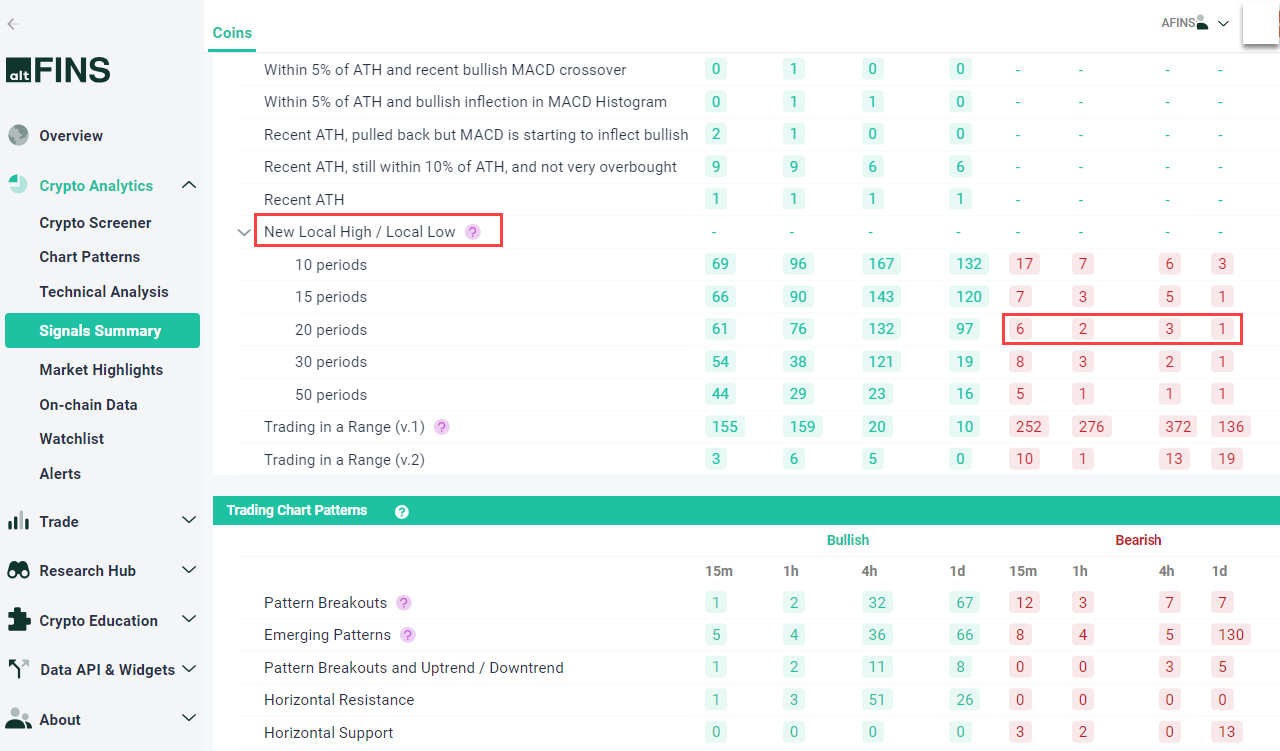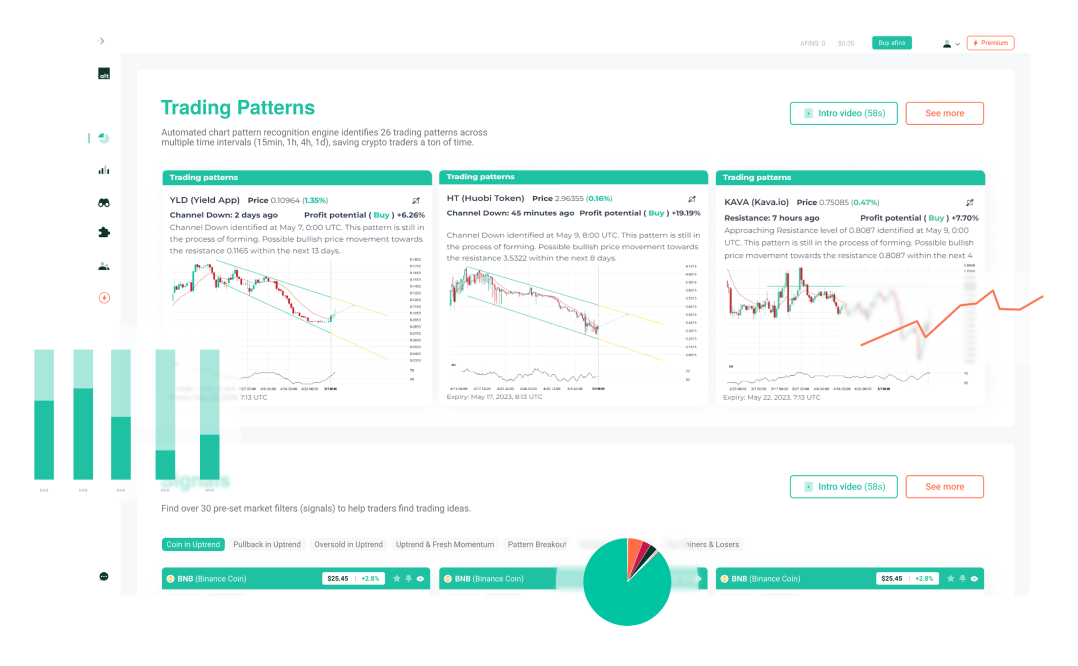Search Knowledge Base by Keyword
New Local Low
New Local Low is used in crypto technical analysis to detect when a new low point has been made in the price of an asset over a specified period. This concept is often used by traders to spot downward trends or breakdowns in the price of a cryptocurrency. A local low refers to a point where the price is lower than the surrounding data points within a given period or window of time.
Watch Tutorial Video about New Local Low and New Local High
Key Points:
- Shorter periods (e.g., 10 or 15): These periods are more sensitive to recent price movements, generating more frequent signals. They are typically used by day traders or swing traders to catch early signs of downward momentum.
- Longer periods (e.g., 30 or 50): These periods are less sensitive to short-term price fluctuations and focus on signaling more significant downward trends. Longer periods are often preferred by position traders or long-term investors.
How It’s Used:
Traders use the New Local Low indicator to identify breakdown patterns, where the price falls below recent lows, potentially continuing downward. Depending on a trader’s strategy, different periods are used to detect either short-term or more substantial downward movements:
- Shorter periods (10, 15): Often used by traders aiming to catch early downward breakouts or corrections.
- Longer periods (30, 50): Typically used to confirm more substantial breakdowns, potentially indicating a larger bearish trend.
Example: these are coins reaching a new low over the last 20 periods. On a daily time frame, this represents a span of 20 days.
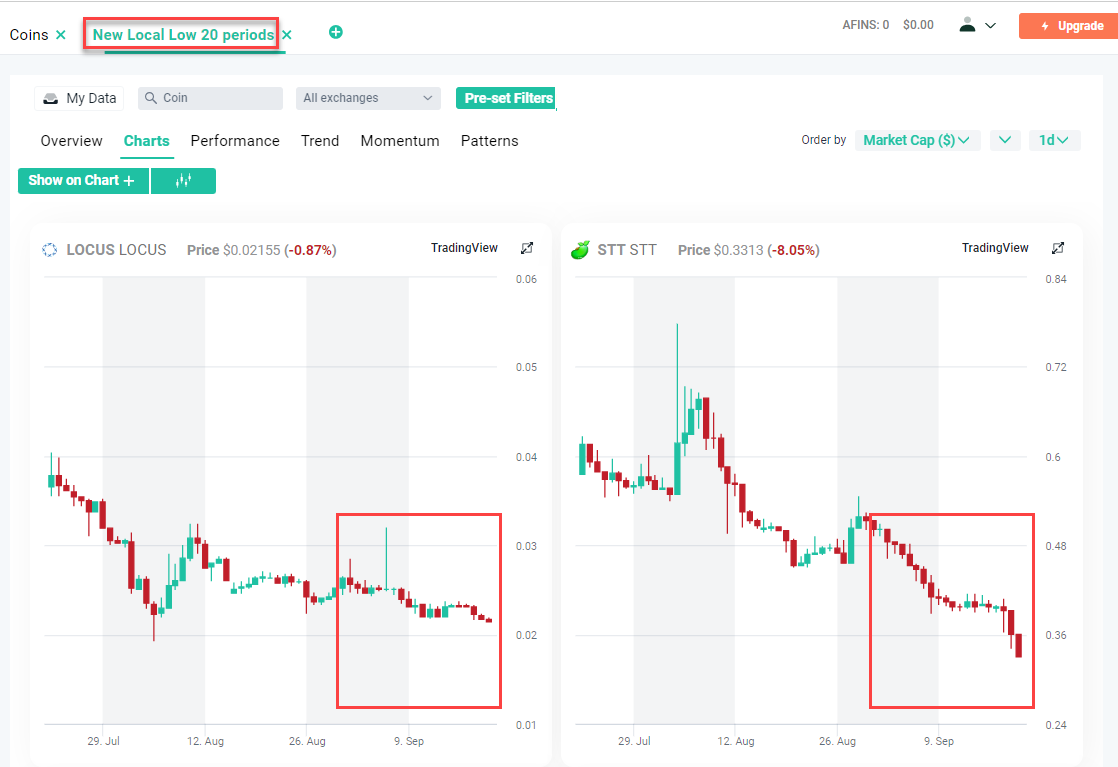
How to Detect New Local Low on altFINS
On the altFINS platform, the New Local Low indicator is available for periods of 10, 15, 20, 30, and 50. The concept works similarly for each of these periods, with the platform automatically detecting and signaling when a new local low is established. Here’s how it works for each period:
For Period 10:
- The indicator checks if the current price is the lowest over the last 10 periods (e.g., 10 days if using daily data). If the current price is lower than any of the prices over the last 10 periods, it will be marked as a New Local Low.
For Period 15:
- The indicator checks the lowest price over the last 15 periods. If the current price is lower than any price from the previous 15 periods, it will trigger a signal for a New Local Low.
For Period 20:
- Similarly, this indicator looks back over the last 20 periods. If the current price is lower than any price within that timeframe, a New Local Low signal is generated.
For Period 30:
- The indicator evaluates the price over the last 30 periods, marking the current price as a New Local Low if it’s lower than any price from the last 30 periods.
For Period 50:
- This longer-period indicator checks whether the current price is the lowest over the last 50 periods, signaling a more significant downtrend if true.
How to Detect New Local Low on altFINS?
If you are analyzing daily price data for a cryptocurrency and set the period to 20, the New Local Low indicator will mark the current price as a new low if it is lower than the lowest price of the previous 20 days.
New Local Low on Crypto Screener
-
Pre-set Filters – Strategy Blocks – New Local Low – Choose Period
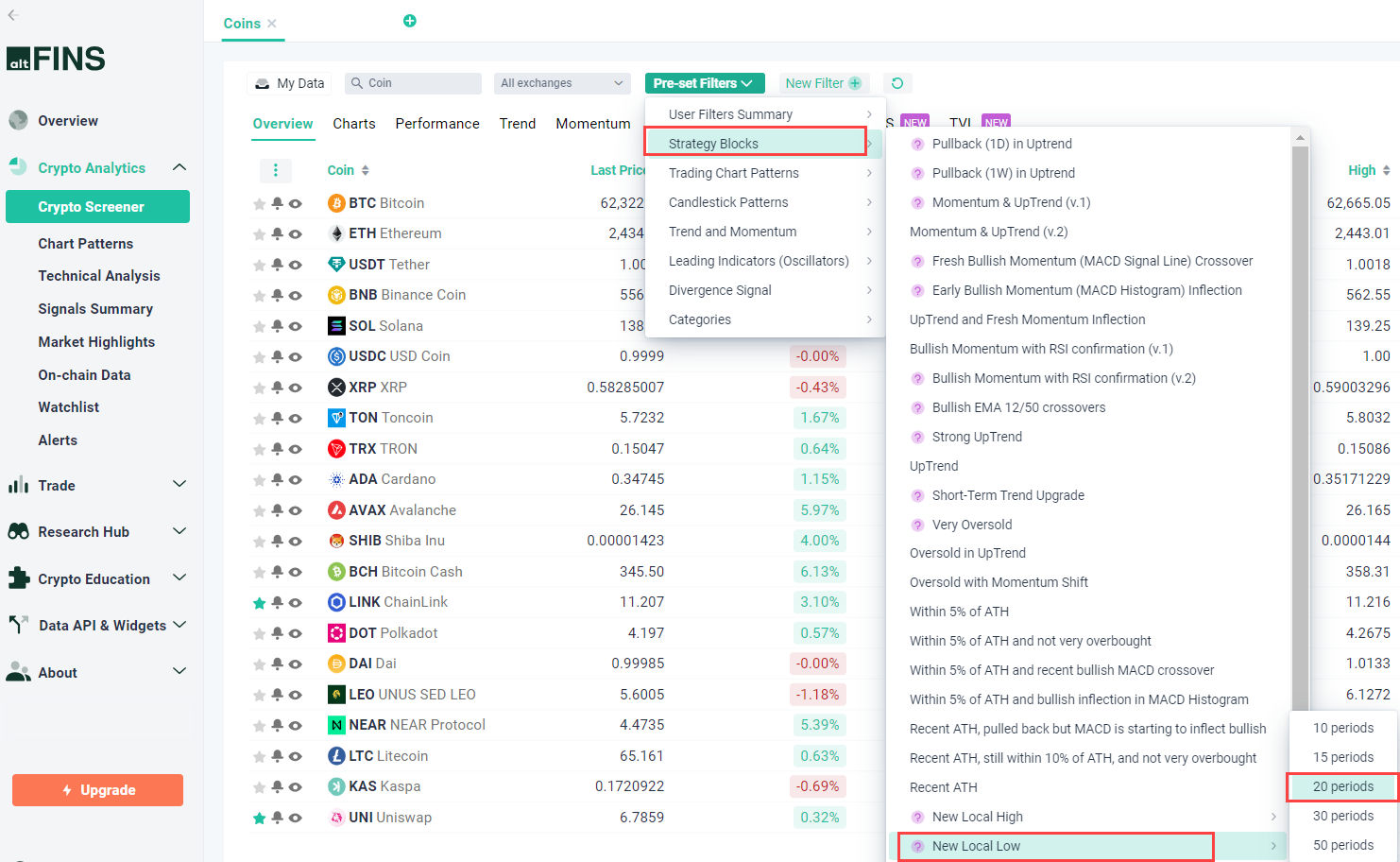
-
Custom Filters – Price – New Low Was Created – Choose Period
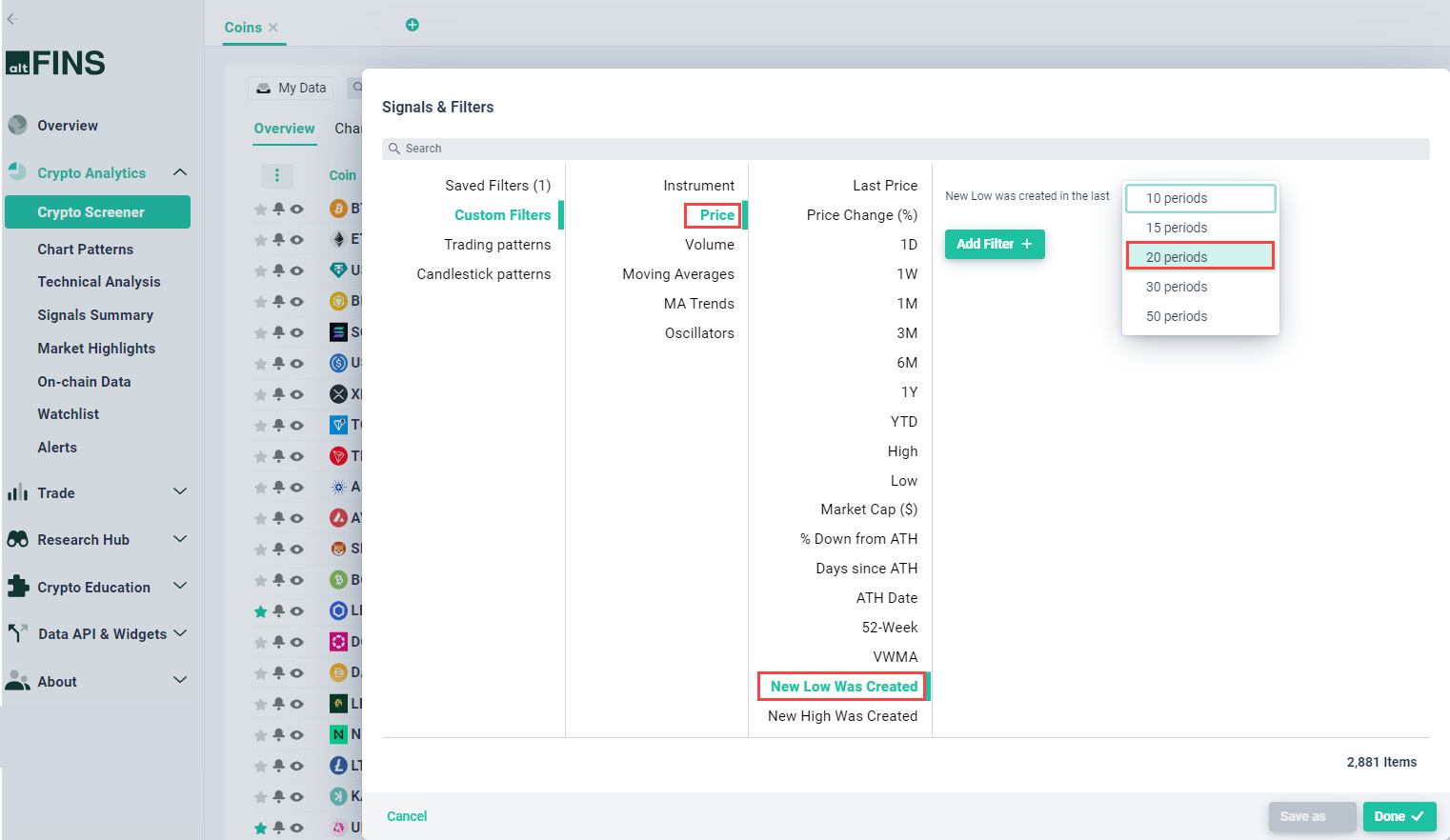
New Local Low on Signals Summary
- Strategy Blocks – New Local Low – Choose Period: You can see a summary of coins that have hit a New Local Low for a specific period.
